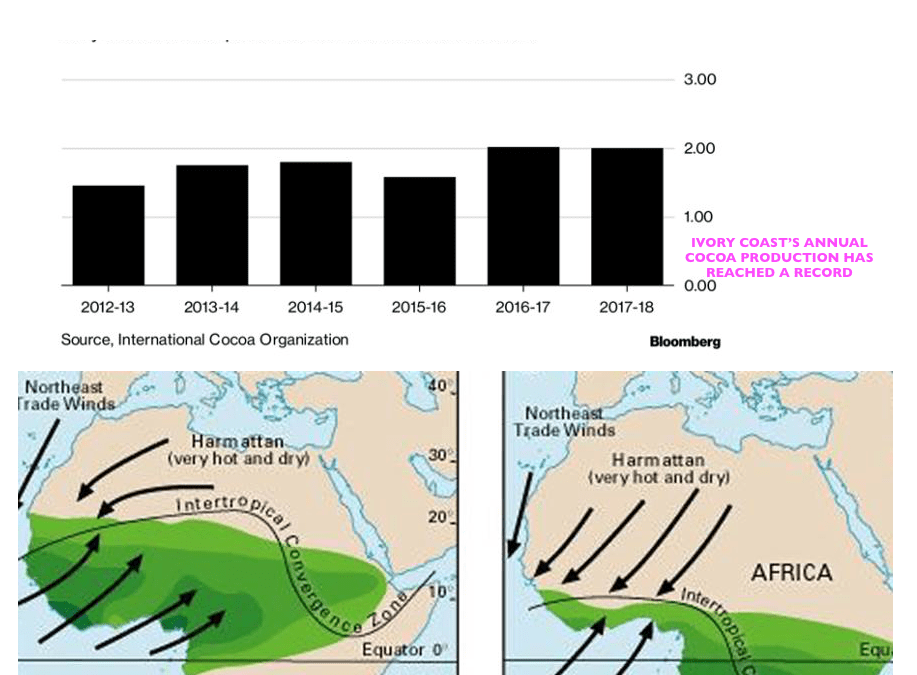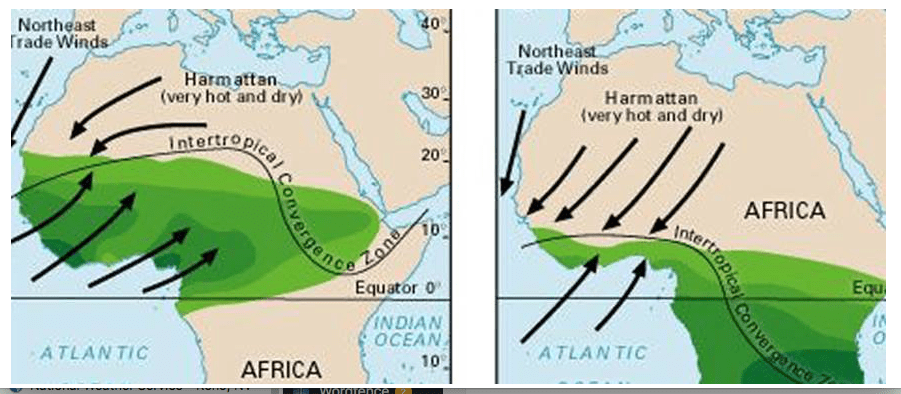The charts above show a main reason cocoa prices have collapsed–another big production year and ideal weather in countries such as Ivory Coast. But what about the Harmattan Wind? Is there any chance for a rally in cocoa prices.
Cocoa History–The Mayan civilization worshiped the cocoa tree and gave it the Latin name Cocoa which means “Food of the Gods.” It was used for many different purposes. The Mayans created a ritual beverage made from ground cocoa beans, vanilla beans and other spices.
The creation of the first modern chocolate bar is credited to Joseph Fry, who in 1847 discovered that he could make a moldable chocolate paste by adding melted cacao butter back into Dutch cocoa. By 1868, a little company called Cadbury was marketing boxes of chocolate candies in England.
Cocoa production is highly sensitive to weather conditions around the world. As the weather conditions varies significantly from one season to another, cocoa production has shown a sharp year on year change. El Nino and La Nina are meteorological events that have a high correlation with global cocoa production. Looking at all El Nino events since 1951, the average decrease in global cocoa production has been over 6.4% With this in mind, one would think that a winter or spring related El Nino type weather rally would occur? Right? Not necessarily. To find out more if El Nino will really occur and how it may or may not affect commodities such as cocoa production. Sign up here for your free report.
During the winter, the most significant weather development that could potentially lower west African cocoa production is a weather event called a Harmattan Wind. The Harmattan can sometimes result in dry, dusty NE winds that can zap cocoa trees of moisture. The last significant Harmattan was during the winter of 2014-15.
For a good definition of the Harmattan click here
HARMATTAN WINDS
SOURCE: kinrossworld.kinross.com















